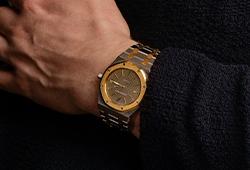Otto G Carlsund
"Nature morte med fetisch, urna & bläckhorn"
Signed OGC IV 34. Ink, 36 x 25 cm.
Alkuperä - Provenienssi
Rolf Söderberg.
Private Collection.
Näyttelyt
Liljevalchs konsthall, "Otto G Carlsund", 2007.
Muut tiedot
In the 1930s, Otto G Carsund suffered from obsessions that caused intense anxiety and became deeply ingrained in his consciousness. He imagined that French justice would apprehend him and take him to Paris, all because of the so-called "Picasso affair." To calm himself down, he devised a way to combat his pathological ideas through artistic practice; he began intensely drawing, marking the beginning of his "Anti-Paranoia period." Oscar Reutersvärd writes in his monograph "Otto G. Carlsund" in 1988, page 104; "Thanks to this type of drawing, which required maximum concentration and countless precisely placed ink lines, Carlsund succeeded in his private therapy. He forced himself into semi-automatic perseveration acts, reminiscent in many ways of Jackson Pollock's almost unconscious paint-splattering procedures."
Carlsund covered his papers with ink lines until he achieved the right shade of gray, and for entirely black areas, the work with the lines became incomprehensibly extensive. "-I probably made billions of ink drawings during those years. There were lots of drawings. God knows where most of them went," he comments on the period himself.
Oscar Reutersvärd continues: "This production, which has come to be called the 'thousand-stroke drawings,' is undoubtedly one of the highlights of Carlsund's artistic career."

















































